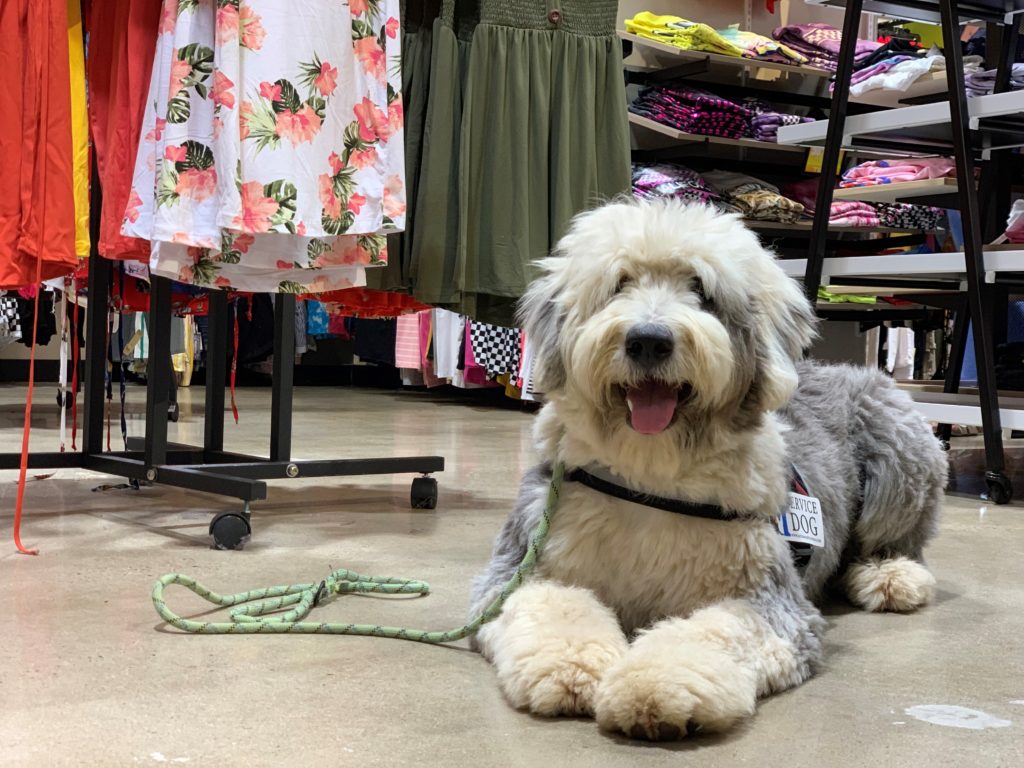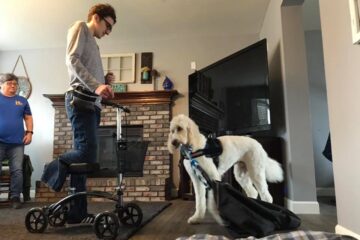In today’s world, it would be hard to say that you’ve never seen a service dog while out running errands. This functional option is becoming increasingly popular as a tool to help mitigate disabilities. Years ago, it would have been a much rarer sight. And then, it would have been a Labrador Retriever, Golden Retriever, or German Shepherd. But now, it’s common to see Huskies, Pitbulls, and even Yorkies don the reputable service dog vest. Why is that? And what breeds really do work well as service dogs?
Service Dogs are not limited by breed

According to the Americans with Disabilities Act, service dogs are not limited by breed, but by function. There are so many different people out there with different needs and requirements so limiting a service dog by its breed would be impractical. An individual needing stability assistance may need a service dog with larger, sturdier traits. Whereas someone who is deaf and needs a dog to quickly alert them to sounds such as the smoke alarm may require a smaller, more energetic dog.
But then why are many service dog training organizations breed specific?
Some companies only breed, raise, and train Golden Retrievers or Labs. To understand this, you must look at the purpose for the dog’s breed. Every dog breed was bred with intention, whether it was to herd cattle, eradicate rodents, or even simply serve as a status symbol for wealthy individuals. Some breeds are more versatile than others. For example, though the German Shepherd is a herding breed, it has proven to be far more than that. Used as police dogs, explosives detection dogs, and even search and rescue, this smart, high drive dog breed has the aptitude to get the job done but are also suitable for proper control (when trained correctly). Hound breeds are a great example of a slightly less versatile dog breed. Though they are sweet and intelligent, their nose typically runs the show. It can be difficult to keep a Beagle’s nose off the ground. And when a Bloodhound gets on the trail of something, they could go on for miles tracking down its source, unaware of other events happening around them.

A recent scandal that hit the news was the incredibly heartbreaking stories of families who received “service dogs” through Ry-Con. This company specialized in the training of the herding breed Briards as service dogs. The AKC definition of the Briard breed states: “They possess traits common to many other herders: trainability, brains, a protective eye toward family (especially kids, whom they regard as their flock), and wariness with outsiders.” Though “trainability, brains, and a protective eye” may seem desirable to the novice service dog handler, it can actually be a recipe for disaster. If a smart dog has too much protective instinct, it can lead to aggressive acts toward strangers (people and other dogs). This can then lead to injuries and lawsuits while taking the “service dog” out in public areas filled with strangers. When breeds with a more difficult nature are used as service dogs, it can very often lead to complications for the dog and owner.
Which breeds make good service dogs?
We all have that breed we desire to own one day. Some of us love the size and powerful look of a Mastiff while others adore the wolf-like elegance of a Siberian Husky. But simply because we have fallen in love with the looks of a certain dog breed does not mean they are right for the job. All professionals in the field understand that not all dogs are capable of becoming service dogs, just as not all dogs have what it takes to become police dogs or all-star agility athletes. Would you expect a squatty English Bulldog to race through an agility course and win first place at world championships? Would a high-strung Belgian Malinois with an excessive prey drive be your first choice as a therapy dog to help children feel at ease during therapy sessions?
No. When selecting a dog breed to do a specific job, we must understand the importance of choosing the right dog for the job, the dog we need. Not the dog we want. Popular dogs among professionals to train as service dogs include Golden and Labrador Retrievers. This is due to their good natures and drive to work. Poodle mixes, particularly Goldendoodles and Labradoodles, have also become a favorite due to their shared heritage with the Golden Retrievers and Labs, making for a good natured but also hypoallergenic option for individuals with allergies to dogs. Sometimes, when a job requiring a higher drive of dog breed is needed, professional service dog trainers turn to German Shepherds. However, we don’t encourage this as the right breed for just anyone.

All of this being said, it is possible to occasionally come across a dog that is in a different breed category that would work out perfectly as a service dog for a specific individual. However, the chances are dramatically lower than finding a good fit in one of the breed categories professional service dog trainers typically use. Additionally, simply because a dog is a Golden Retriever, Lab, or Doodle, does not mean it is automatically a perfect service dog candidate. The odds of finding a good service dog candidate in those breeds are simply higher.
Speak with a reputable service dog trainer
In conclusion, to ensure you get the right service dog for your needs, speak with an experienced service dog trainer who can discuss your specific situation and offer information about types of breeds that may fit in well with your lifestyle and precise needs.



0 Comments